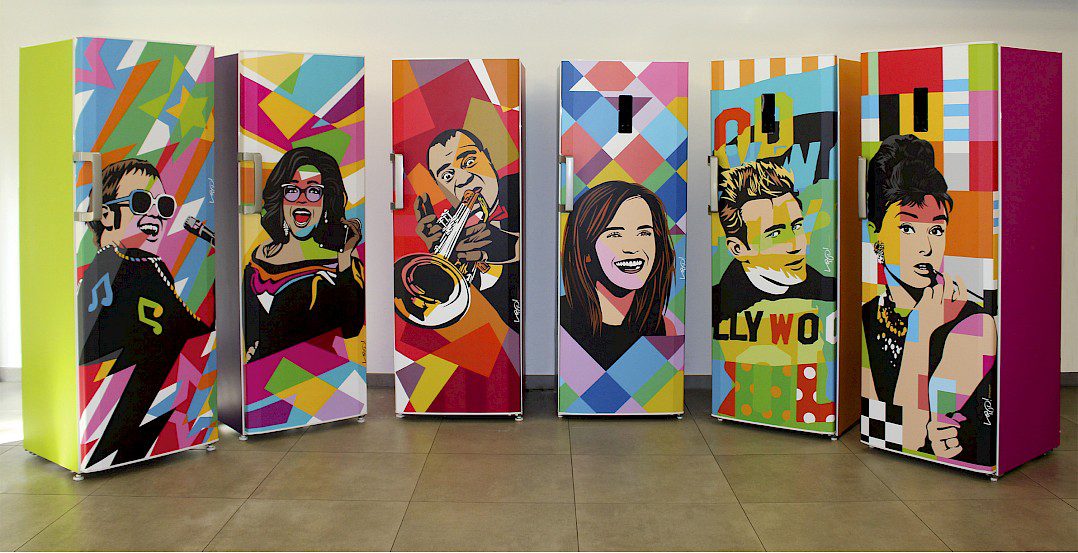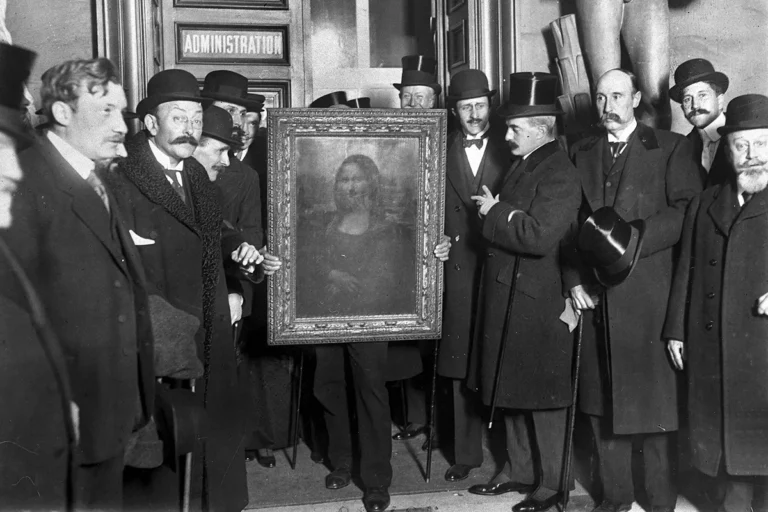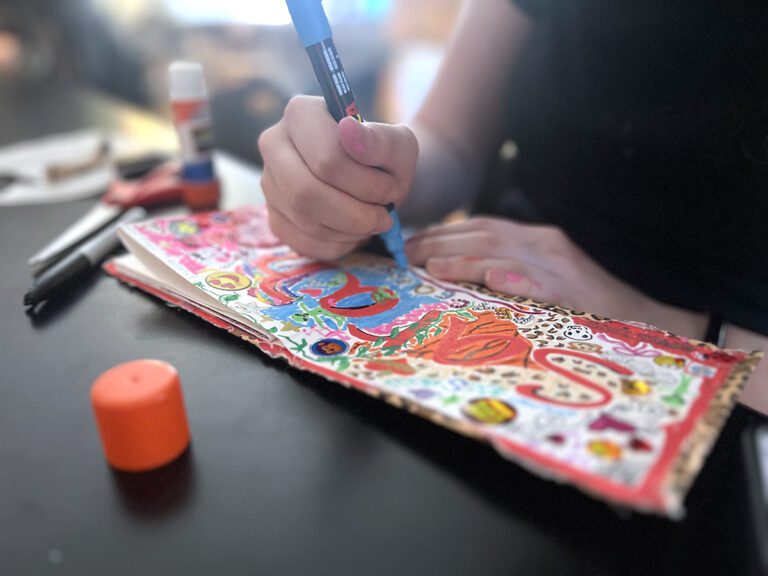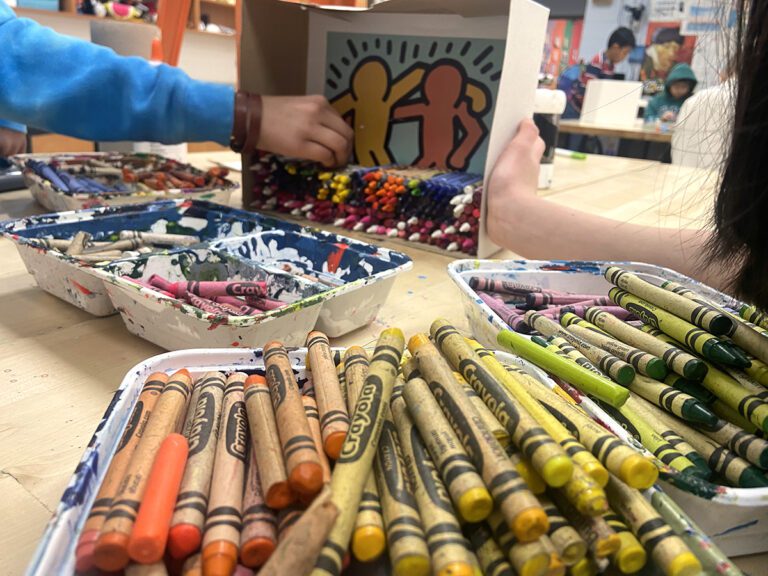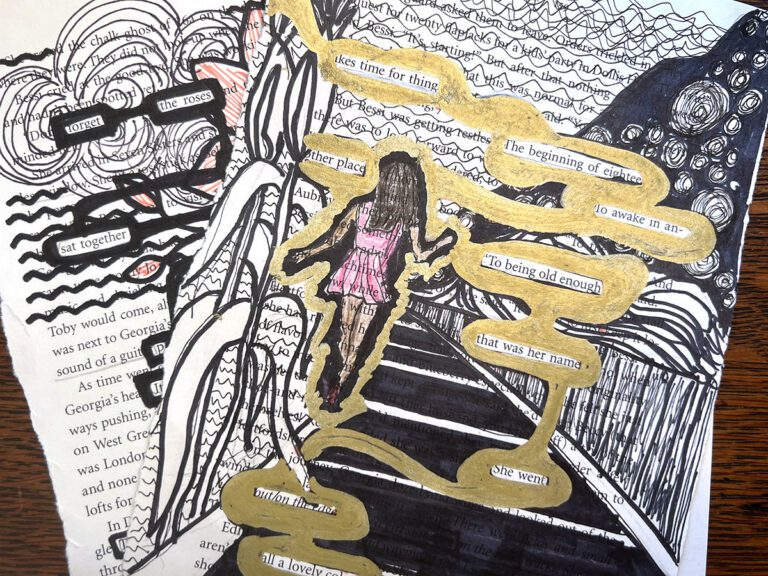Note: Be sure to review all resources and preview all artists and musicians before determining if they are appropriate to share with your students.
Share similarities between content areas to hook students in an instant! One great cross-curricular connection to tap into is music and visual art. Many students love music and have a strong opinion on what they like and dislike. Not only can conversations about music genres foster camaraderie and establish common ground with your students, but music can also help students focus. Florida National University agrees; listening to music simultaneously activates both sides of the brain, which maximizes learning and improves memory. Who wants students with exponential learning potential and stronger memory retention? Sign me up!
You may be thinking, “But I’m not a music teacher! How can I possibly integrate music into my art class?” The good news is music and visual art are very similar. Both have elements that make up a whole composition and tell a story, either in a final song or sculpture.
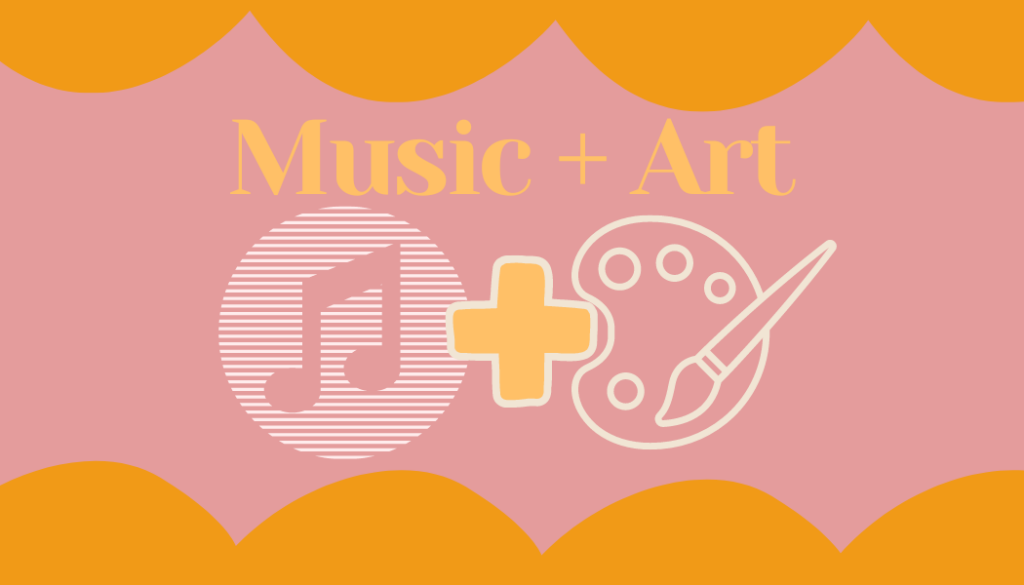
Here are two ways music and visual art are similar:
- Consider how the elements of art can portray certain sounds.
The elements of art include color, form, line, shape, space, texture, and value. For example, deep red hues and erratic lines may sound like an angry rock song with fast electric guitar solos. - Explore the elements of music and how they parallel the elements of art.
The elements of music include rhythm, dynamics, melody, harmony, tone, texture, and form. If a musical composition sounds happy, such as the beginning soundtrack to a Disney movie, it may have warm colors and rounded shapes. A quick or short note can translate to a small shape, dot, or short line. Represent a fast tempo with a repetition of quick, fast lines.
Artists have been creating masterpieces while listening to music for decades. Jog your students’ creativity by checking out these artists and their inspirational music.
1. Crystal Zapata | Soul and R&B
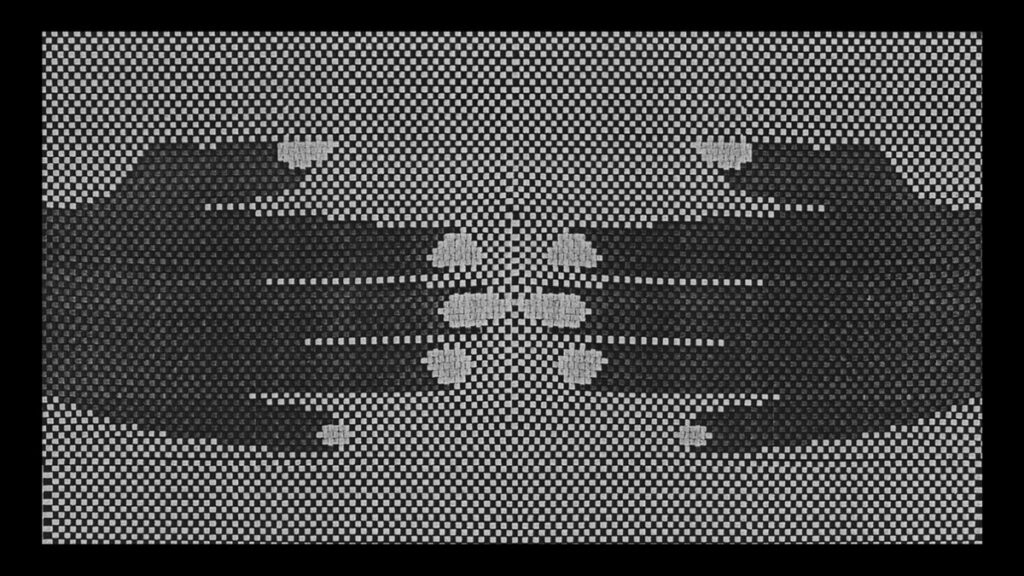
Image Source: https://crystalzapata.com/Illustration
Crystal Zapata is a contemporary artist from Chicago, Illinois, who works with mediums from colored pencils to computer graphics. Her work is spontaneous yet deliberate, with connections to soul music. Listen to the soul songs from the ‘50s, ‘60s, and ‘70s below while you view her work.
2. Samuel “Defame” Mills | Metal
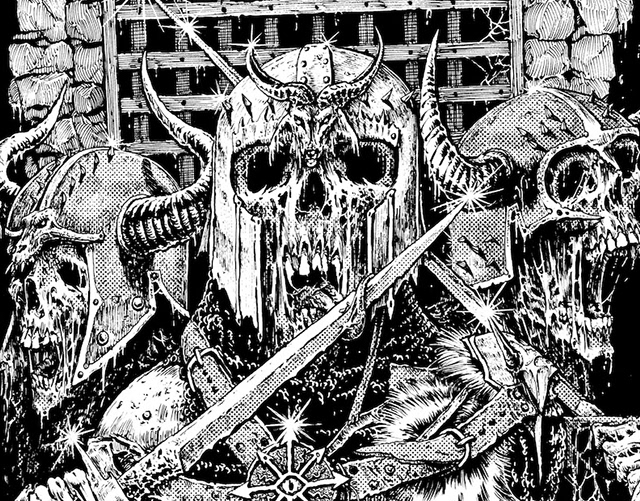
Image Source: https://defameind89.myportfolio.com/
Samuel Mills is a contemporary artist based in Austin, Texas, who is heavily influenced by other artists like Mark Riddick and Chris Moyen. He describes his artistic style as “crusty, stringy, putridness that can only be described with a double bass, blasting riffs and guttural noises.” Mills draws influence from ink masters from the 1800s and comic books from the ’70s to ‘80s. (Think Spiderman, X-Men, and the Hulk!) Play some metal music while your students view Mills’s art.
3. Shepard Fairey | Punk
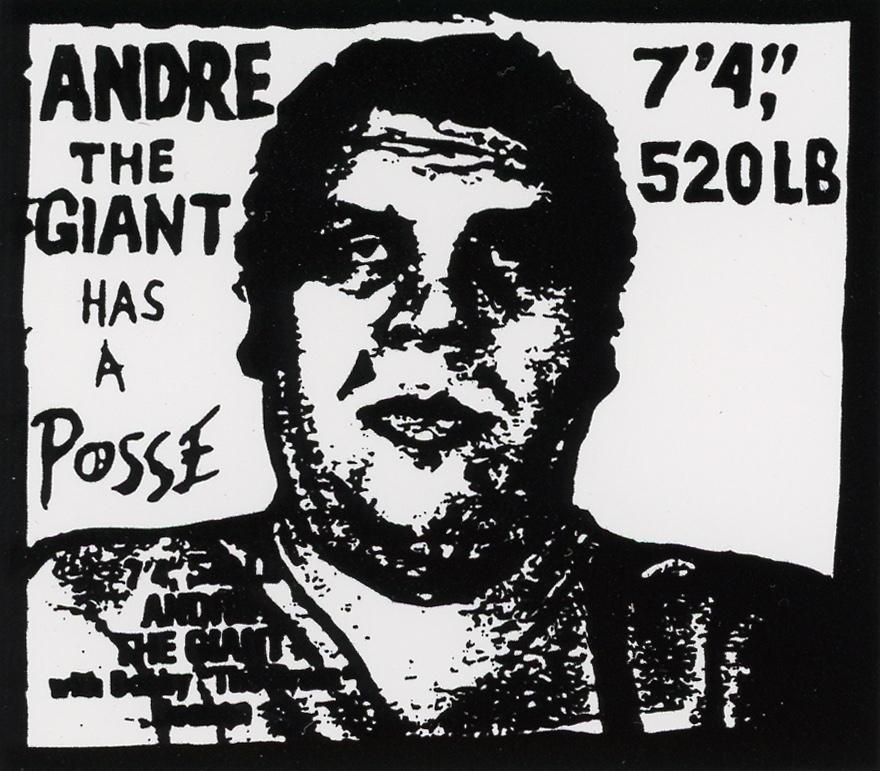
Image Source: peopleshistoryarchive.org/content/andre-giant-has-posse
Shepard Fairey is a contemporary street artist currently residing in Los Angeles, California. His name to fame debuted with his Andre The Giant sticker and former president Barack Obama’s campaign poster. Check out his detailed Artist Bio in FLEX Curriculum. Give your students a taste of punk music while they view Fairey’s prints.
4. Lauren Halsey | Funk
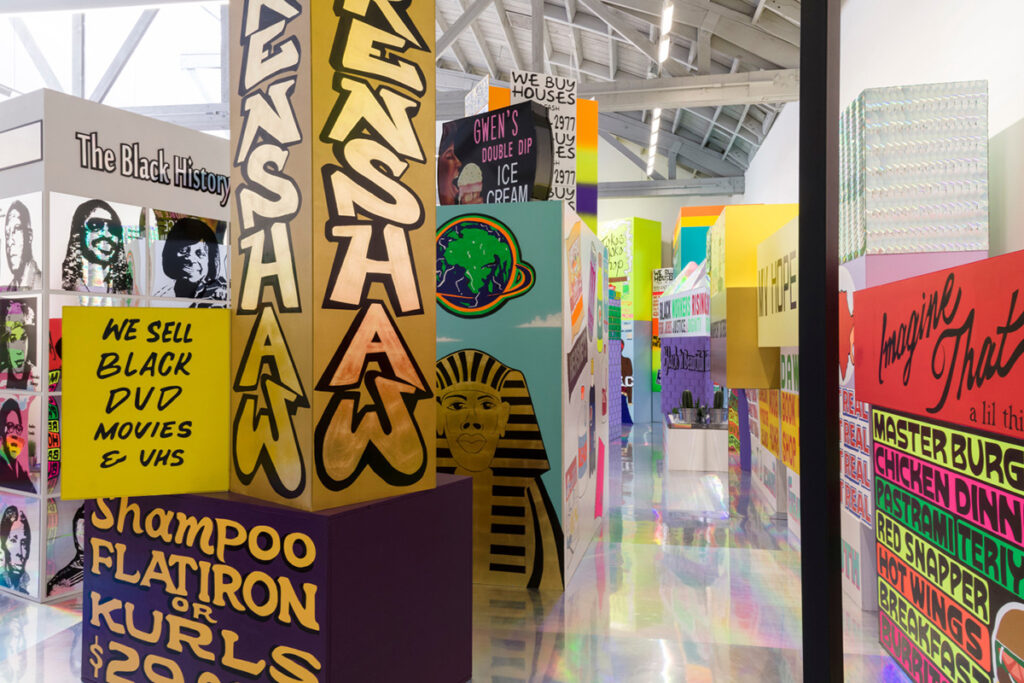
Image Source: https://www.davidkordanskygallery.com/exhibitions/lauren-halsey2?view=slider#11
Lauren Halsey is a contemporary artist living in South Central Los Angeles, California. She uses collages, installations, and sculptures to reflect the diverse issues people experience. Halsey’s musical influence ranges from Parliament-Funkadelic to Lauryn Hill to Bob Marley. Share George Clinton and Parliament-Funkadelic tunes with your students as they browse Halsey’s body of work.
5. LOBO | Latin
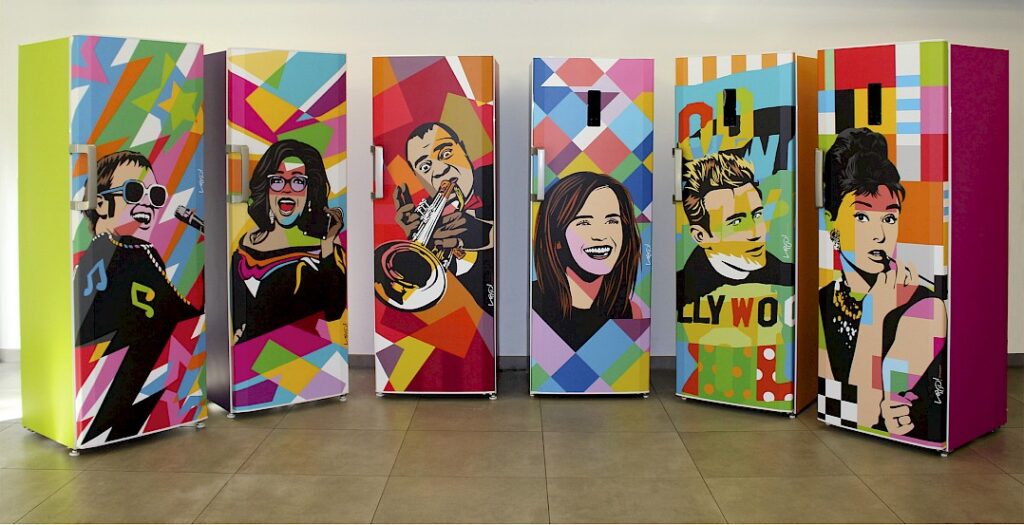
Image Source: https://www.365rooms.be/blog/lobo-365/
LOBO is a contemporary artist from Sao Paolo, Brazil. He started in the pop art scene with bold colors. His musical inspiration comes from the B-52s, David Bowie, Sigue Sigue Sputnik, and others. Expose students to David Bowie or Brazilian music as you discuss this artist.
https://www.youtube.com/watch?v=IPb60Xi8TG0
6. Ed Ruscha | Jazz
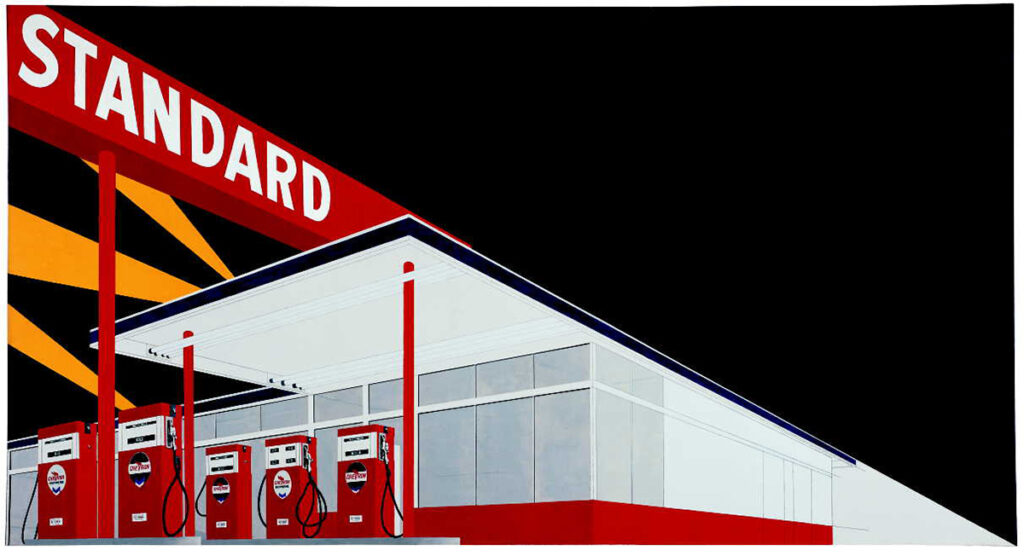
Image Source: https://edruscha.com/works/
Ed Ruscha is a contemporary artist who was born in Omaha, Nebraska, raised in Oklahoma City, Oklahoma, and is currently living in Culver City, California. American West landscapes, isolated gas stations, quiet buildings, and typography make up a large breadth of his work. Inspiration comes from Spike Jones, the Eagles, the Doors, ‘50s jazz clubs, country, and R&B. Download his detailed Artist Bio in FLEX Curriculum. Give students the opportunity to hear 1950s jazz club tunes or the Eagles as they browse Ruscha’s work.
7. Paul Klee | Classical
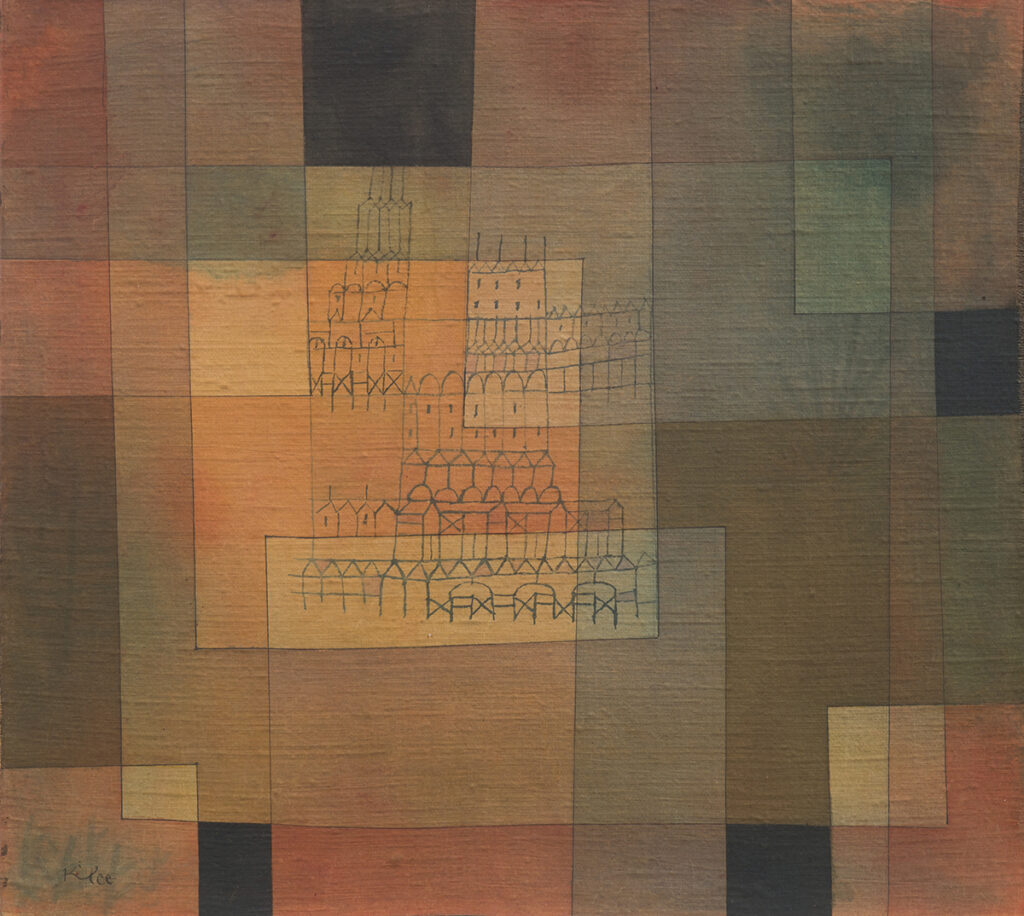
Image Source: https://www.slam.org/collection/objects/17586/
Paul Klee was a Swiss artist who lived from 1879 to 1940. In addition to being a sculptor, printmaker, painter, and experimenter, he also played the violin. In 1932, Klee painted Polyphony (shown above). It showcases geometric abstraction inspired by Johann Sebastian Bach’s musical texture through color blocking. Stream Bach in your classroom as students create their own Klee-inspired paintings.
8. Romare Bearden | Jazz and Blues
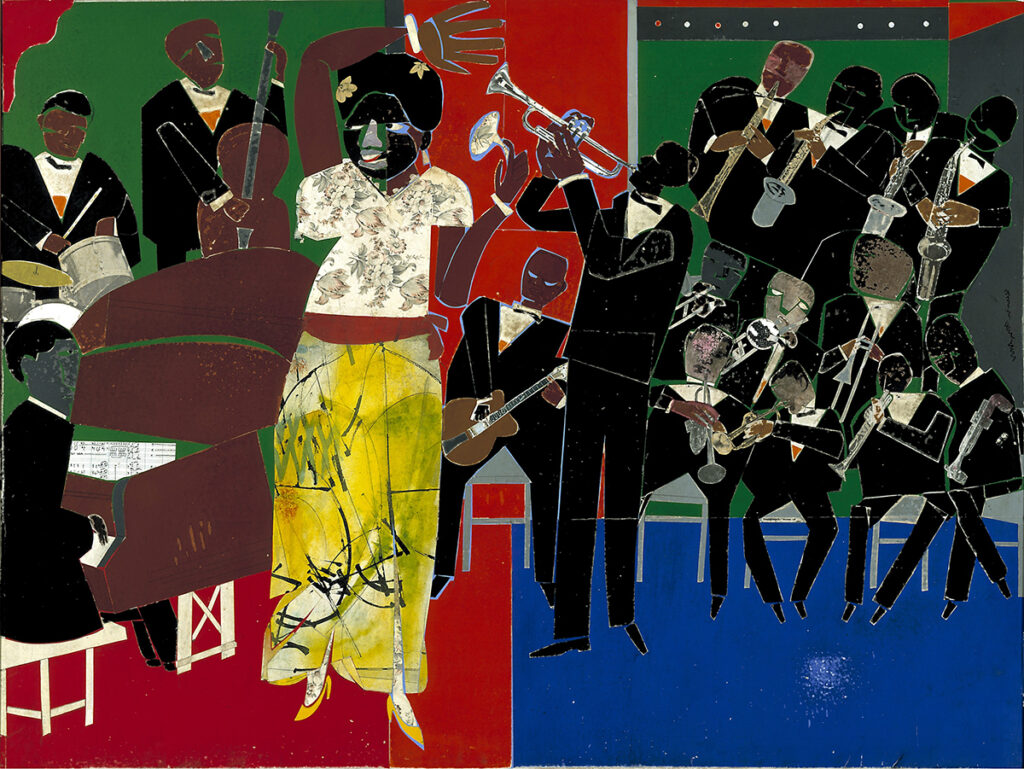
Image Source: https://nationalbluesmuseum.org/blues-in-art-romare-bearden/
Romare Bearden was an African-American artist, songwriter, and author who lived from 1911 to 1988. He worked with a variety of mediums, including watercolor, oil paint, and more. Despite his wide repertoire, he is most well-known for collage. Bearden had a close connection to music. He lived above the Apollo Theater in New York City, and his work was influenced by jazz and blues. Play Bessie Smith for your students as they peruse Bearden’s collages.
https://www.youtube.com/watch?v=e3W0AUgWBl0
9. Piet Mondrian | Boogie-Woogie
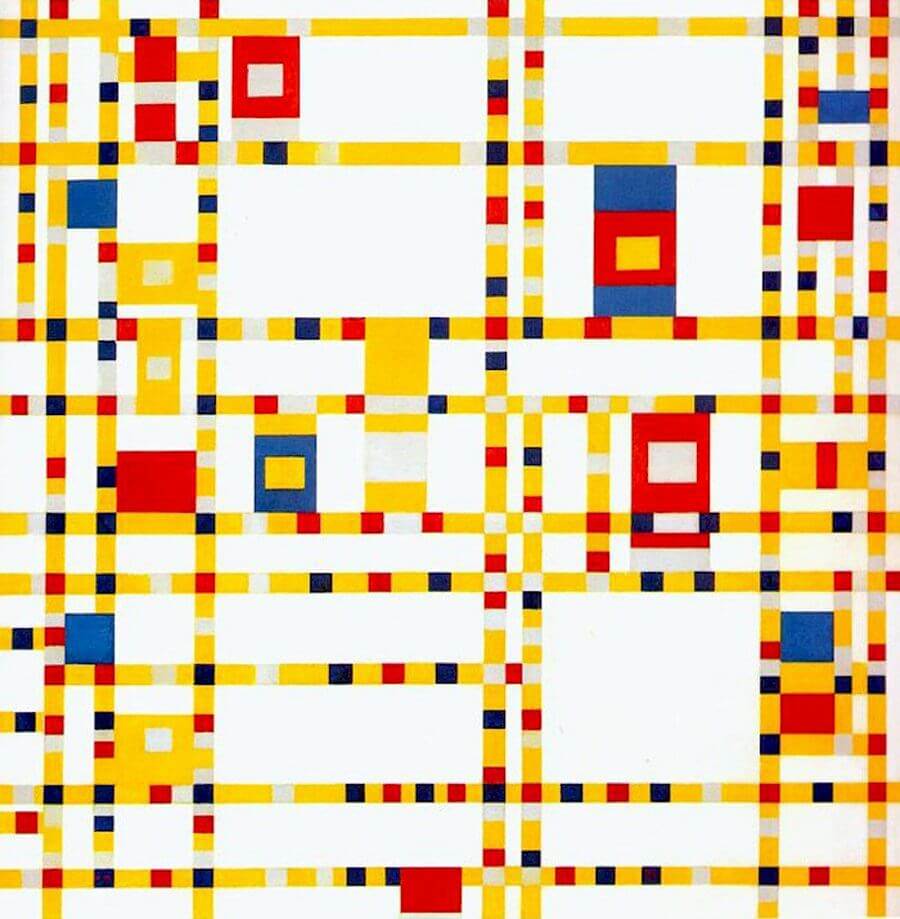
Image Source: https://www.piet-mondrian.org/broadway-boogie-woogie.jsp
Piet Mondrian was a painter from the Netherlands who lived from 1872 to 1944. His style is iconic, with simple geometric shapes, a limited color palette, and nonobjective subject matter. Mondrian started painting realistic trees that abstracted over time. He moved to America in 1940 and fell in love with Boogie-Woogie music (playing blues with a piano.) He visually created rhythm using long lines and the intersection of color and shape. Experience Boogie-Woogie music while students examine the progression of Mondrian’s paintings.
Now that you have some artists and the music that inspired them to share with your students, take a look at some fun activities you can do to break up your curriculum!
Consider sharing the artists above with your students. As you do so, listen to the music that inspired them and discuss how each element corresponds to the others. Keep reading to learn how you can curate a powerful experience in your classroom to infuse music and visual art.
- Search lo-fi or instrumental playlists if your district allows YouTube access.
- Compare and contrast the characteristics of songs with a Venn diagram. For example, play a slow melancholy tune. Then, play a quick, upbeat melody.
- Play a song and let students interpret what color the song represents to them and why.
- Incorporate dance with younger classes. Allow students to create an interpretive dance to the mood and emotion of a song and corresponding artwork. Freeze dance is often popular too! Strike a pose to match the music and hold it when the music stops.
- “Build” a song using a sculptable medium such as clay or pipe cleaners. Students move the material to the sound of the song.
- Play a popular song from the year of the artwork at hand to give students an audial timeline.
- Share music videos inspired by art.
- Use a circuit board on a Makey Makey® to allow student artwork to sing! Program each part of the circuit with a specific tone, note, or sound and play the composition for the class. Watch the Pack Bringing Coding Into the Art Room from the PRO Library for detailed information.
Activating the left and right brain simultaneously through playing music helps students maximize their learning potential and retain memory. With today’s technology, there are countless ways to inject music into your classroom. Paint the mood of a song, draw the energy in a musical composition, or listen to music to increase focus. However you incorporate music, don’t forget to dance a little and enjoy the moment with your students!
What music is playing in your classroom?
How can you incorporate music into your curriculum at a deeper level?
What unique ways do you use to incorporate music in your personal studio and body of work?
Magazine articles and podcasts are opinions of professional education contributors and do not necessarily represent the position of the Art of Education University (AOEU) or its academic offerings. Contributors use terms in the way they are most often talked about in the scope of their educational experiences.
